Developer Offer
Try ImaginePro API with 50 Free Credits
Build and ship AI-powered visuals with Midjourney, Flux, and more — free credits refresh every month.
Revolutionize Your Reading With This ChatGPT Trick
Have you ever finished a brilliant book and wished you could ask the author a question? What did they truly mean by that one passage, or how would their advice hold up today? I discovered a way to make this happen using ChatGPT. By uploading a book and using a few clever prompts, I was able to have insightful conversations with a digital version of the author.
Of course, it's not the real person, but role-playing with ChatGPT makes the reading experience incredibly personal, immersive, and practical. This simple process can change the way you interact with books, and you can try it yourself in just five minutes.
Step 1: Upload Your Book to ChatGPT
First, you need to give ChatGPT direct access to the text. Simply upload a PDF or ePub version of the book you want to discuss into a ChatGPT Project. This can be anything from a classic like Meditations by Marcus Aurelius to a modern self-help guide or even a technical document.
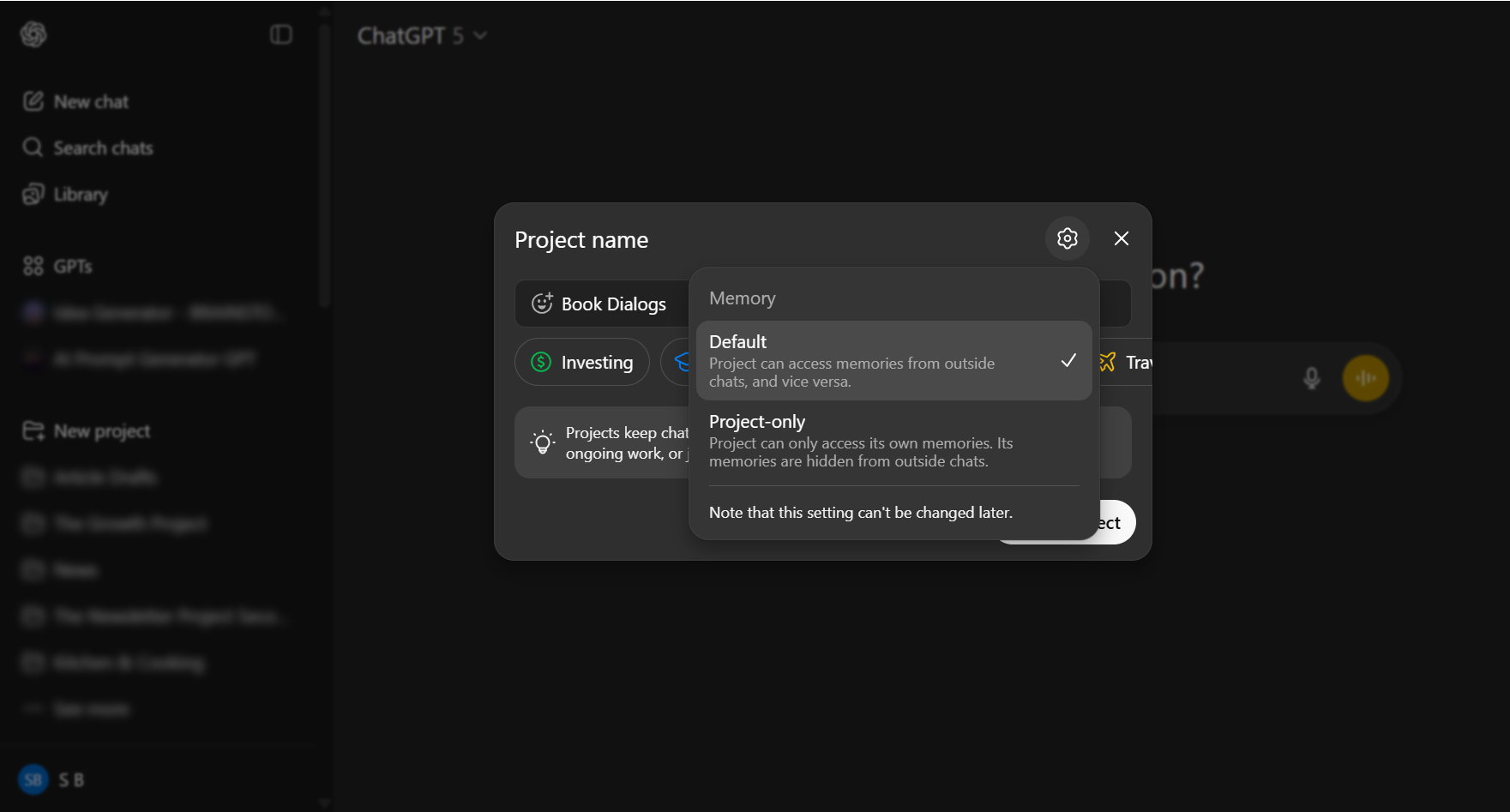
Adding the book provides the AI with the necessary context to generate well-informed answers. I recommend using the default setting that allows ChatGPT to access memories outside the project, as it can help connect ideas from different sources. If your book is in an unsupported format, you can use a tool like Calibre to convert it.
Step 2: Set the Stage with Custom Instructions
After uploading the book, you need to tell ChatGPT how to act. Give it clear custom instructions to absorb the book's content and respond in the author's voice.

For my experiment with Meditations, I used this prompt:
I’ve uploaded a book called Meditations. Please absorb its ideas and respond in the tone and mindset of Marcus Aurelius. Speak as though I’m having a personal conversation with him.
This instruction prompts ChatGPT to role-play as the author. You can tailor the prompt to request a formal lecture, a friendly chat, or anything in between.
Step 3: Begin Your Dialogue
Now, you can start asking questions and turn your passive reading into an active conversation. Treat the AI as your direct line to the author. Ask about their core ideas, challenge their philosophies, or explore how their wisdom applies to contemporary life.
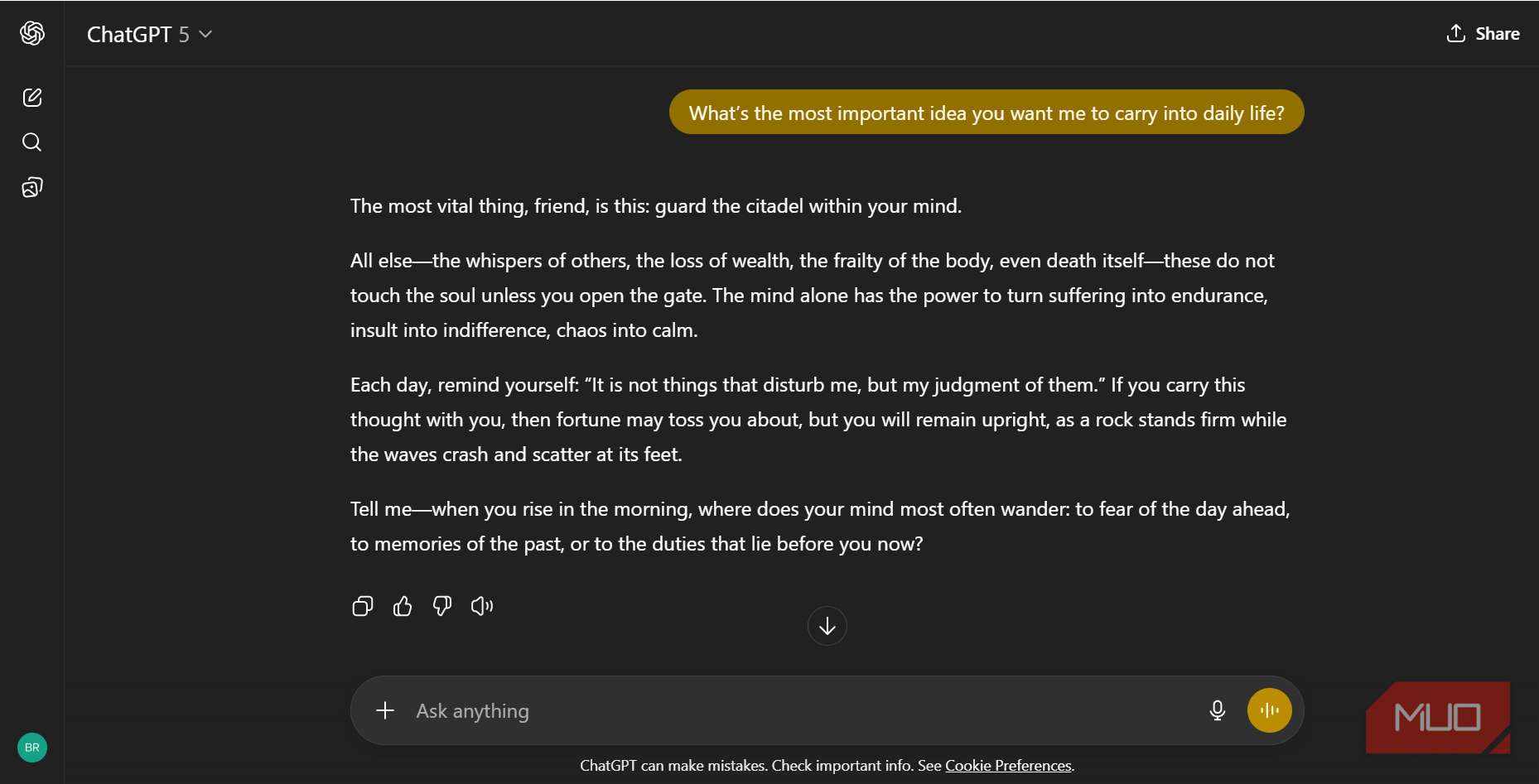
Here are a few starter questions I like to use:
- “What’s the most important idea you want me to carry into daily life?”
- “How should I apply your lessons to modern distractions like social media?”
- “Can you explain this passage more simply, as if you were teaching a beginner?”
Often, ChatGPT will continue the conversation by asking follow-up questions, making the interaction feel like a genuine one-on-one discussion. It’s a powerful way to bring timeless wisdom into a modern context.
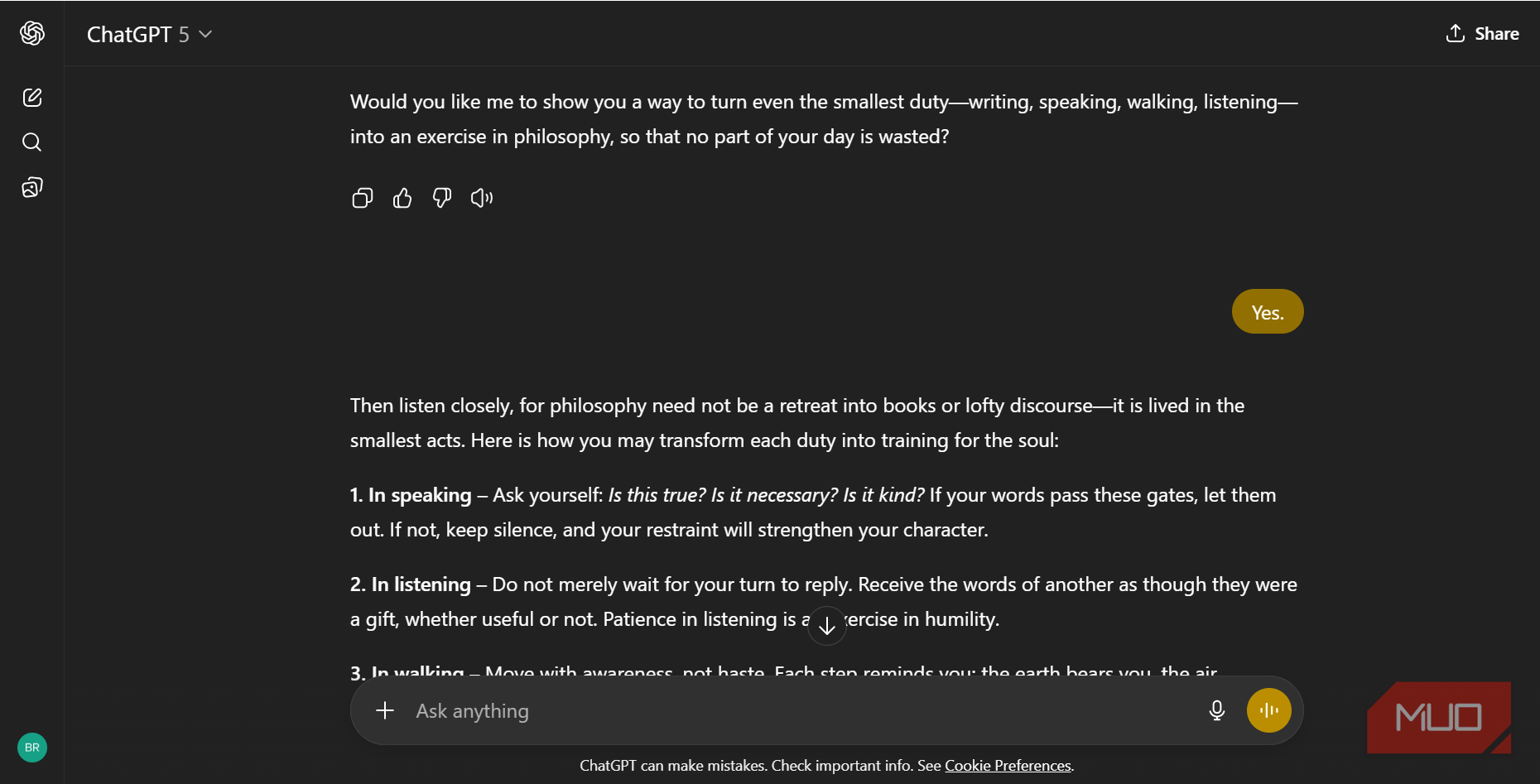
Step 4: Go Deeper and Challenge Your Thinking
Don't stick to surface-level questions. Push the conversation further by asking the AI author to challenge your assumptions or critique your perspective. A simple prompt can elevate the dialogue:
Challenge me the way you would if I were your student. Don’t just agree—make me reflect more deeply.
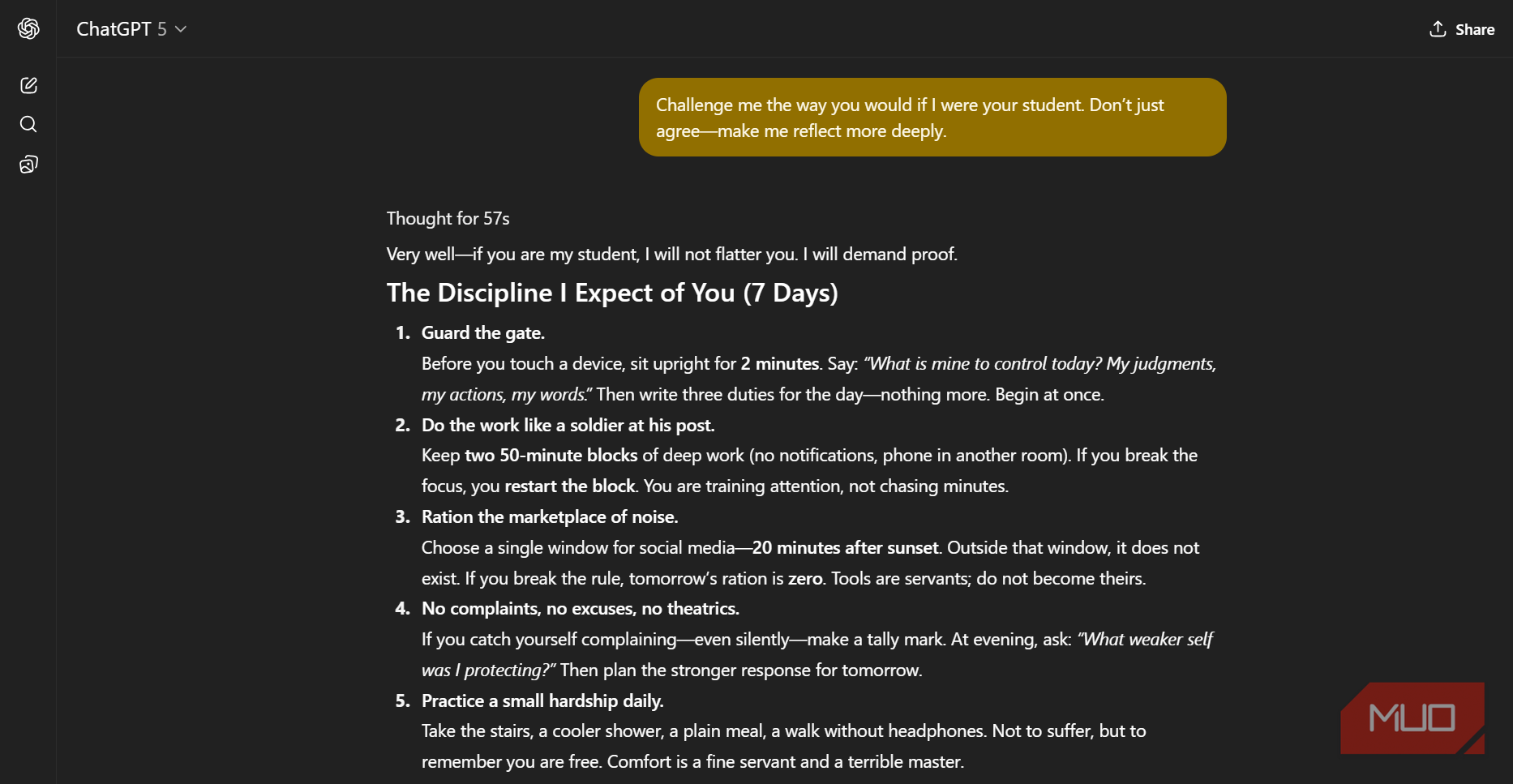
Remember that large language models are often designed to be agreeable. You may need to use specific prompting techniques to wring out brutally honest answers from ChatGPT. This approach transforms a simple Q&A into a thought-provoking debate, helping you actively engage with the material.
Step 5: Save and Revisit Your Conversations
One of the best features of using ChatGPT Projects is that the uploaded book and your conversation history are saved. You can return at any time to pick up where you left off. I typically start by discussing the book's main themes and then dive into specific chapters or ideas in later sessions. Asking ChatGPT for a quick summary of your last chat is a great way to get back into the flow.
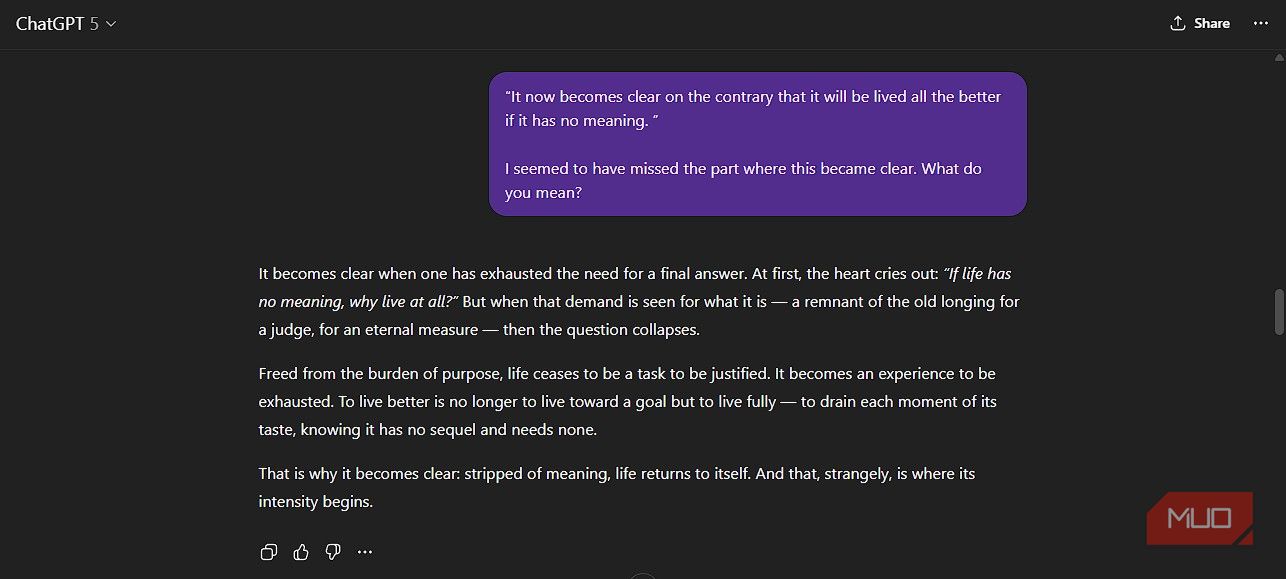
A Toolkit of Powerful Prompts
Having a set of go-to questions can help keep the conversation flowing. Consider keeping a list of effective prompts in a prompt manager. Here are some versatile options for any book:
| Prompt | When to Use It |
|---|---|
| What’s the most important idea I should apply in daily life? | Great for identifying core takeaways. |
| Can you explain this passage in simpler terms? | When a section feels dense. |
| If you were alive today, how would you apply your ideas to [modern issue]? | Relate classic wisdom to today’s challenges. |
| What do readers often misunderstand about your work? | Helps uncover hidden nuances. |
| Challenge me on this idea—why might I be wrong? | Forces deeper reflection and critical thinking. |
| Could you expand on [chapter or theme] with a real-life example? | Makes abstract concepts practical and relatable. |
Think of ChatGPT as the bridge between the author's world and your own. The more thoughtful your questions are, the more rewarding the dialogue will be.
Expand Your Horizons: Experiment with Different Genres
This method isn't just for philosophy books. You can apply it to nearly any genre to improve retention and understanding:
- Self-help: Ask the AI to create practical exercises or even create mini self-help exercise books based on the content.
- Business: Role-play scenarios to apply strategic advice to your own work.
- Fiction: Have conversations with the characters as if they were real.
- Textbooks: Ask the 'author' to simplify complex topics into plain language.
Each genre offers a unique conversational experience, turning a novel into a character chat or a textbook into a personal tutoring session.
A Word of Caution: Read First, Chat Later
It is crucial to read the book thoroughly before engaging with ChatGPT. LLMs can make mistakes or 'hallucinate' information. They also may not process an entire large document at once, so your conversation will be more effective if you can guide it toward specific sections. Despite these limitations, this experiment has fundamentally changed how I read. It transforms me from a passive reader into an active participant, helping the lessons from any author—classic or modern—stick with me for much longer.
Compare Plans & Pricing
Find the plan that matches your workload and unlock full access to ImaginePro.
| Plan | Price | Highlights |
|---|---|---|
| Standard | $8 / month |
|
| Premium | $20 / month |
|
Need custom terms? Talk to us to tailor credits, rate limits, or deployment options.
View All Pricing Details

